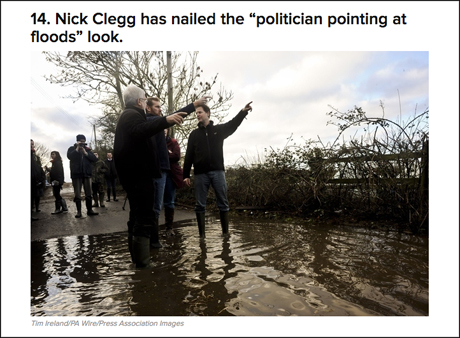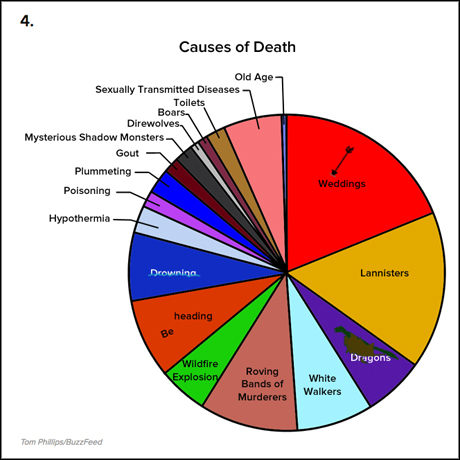
BuzzFeed is renowned for its highly-shared content, disowning search engines in favour of a 'social-first' strategy and creating articles specifically for a sharing audience which go viral across multiple platforms of social media.
Last week, BuzzFeed UK editor Luke Lewis gave a masterclass in creating a community and a buzz around content on social media as part of the news:rewired+ training day. Here are some of his tips for what has worked at BuzzFeed, and what could be applied elsewhere.
Start small
Lewis highlighted the importance, especially for smaller projects, to pick a platform and devote the majority of your resources to it.
"A problem with a lot of places is that they try to engage with a lot of platforms," he said. "Places like the BBC can pull it off because they have the resources but for start-ups it’s best to stick to one."
Despite many organisations targeting Twitter to build a community on social media, BuzzFeed is directing more resources into engaging readers on Facebook, said Lewis.When you are starting out, constantly trying to drive content back to your website can be a bit of a handicapLuke Lewis, BuzzFeed UK
In Facebook's annual report for 2013, released last December, the network claimed 1.23 billion monthly active users, almost a billion more than the 271 million Twitter currently reports.
"Twitter can be a bit of a lot of work by scheduling tweets, and Twitter users can be quite hard to please," Lewis said. "With Facebook, you can get more shares, more views and a larger viewership because more people are there."
And nostalgia-themed articles have been particularly popular.
"Odds are you grew up with your Facebook friends," he said, "so if you share an article about nostalgia it is likely that a discussion is going to happen there because you all lived it."
BuzzFeed also discovered that that 00s-themed nostalgia articles received far more shares than those focussed on the 90s because of the difference in demographic who would have experienced those decades.
"People who grew up in the 90s are typically in their 30s and are less likely to share," he said, "but the teenagers or 20-somethings who grew up in the 00s are more likely to share their articles."
Get the tone right for your audience
In the first few months of BuzzFeed UK, Lewis discovered that the British audience rejected 'happier' stories in favour of more self-deprecating and tongue-in-cheek stories about Britain.
"We put out a lot of different stories when we began," he said, "but we found that the British people really love self-deprecating and class-based humour, so we did more of it."
Because more funny stories were being shared, BuzzFeed UK decided to approach some serious articles with a more comedic tone.
Their coverage of UK floods in February 2014 became 21 Photos Of Politicians In Wellies Staring At Floods, and the St Jude storm, initially billed as near-apocalyptic by some news organisations, was satirised by displaying pictures of people’s plastic garden furniture being knocked over.

Screengrab from the BuzzFeed UK article '21 Pictures Of Politicians In Wellies Staring At Floods'
Localisation
When experimenting with different types of articles on BuzzFeed UK, Lewis discovered that many of those which are local in nature are shared rapidly.
"We did a quiz called 'How Northern Are You Actually?' which worked really well," he said, "because lots of people in the north were sharing it and then their northern friends were sharing it and it caused quite a concentrated local stir."
Again, this content worked well on Facebook as, typically, Facebook friends are more local to each other compared to Twitter, said Lewis.
Directing content
Contrary to popular belief, BuzzFeed believes that it isn’t always necessary for shared content on social media to direct readers back to the website.
Platforms like Instagram, Tumblr and Facebook can be used "just for fun", said Lewis, as an opportunity to experiment and reach out to communities in different ways.
"When you are starting out, constantly trying to drive content back to your website can be a bit of a handicap," he said. "If you just put stuff out there, it gives you a little more freedom with what you can do."
Lewis said BuzzFeed had experimented by putting images and videos into people’s Facebook feeds with an embed code to autoplay the content without linking back to the website, just to help build the social community.
Lists can be used for everything
BuzzFeed is famous for the list approach to stories, and Lewis explained that BuzzFeed’s content management system (CMS) is designed specifically for this purpose, but could be applied in many different ways.
This is the Buzzfeed CMS community contributors see. Very easy to use, simple, idiot-proof UI pic.twitter.com/TuZQrHMQN9
— Patrick Smith (@psmith) March 27, 2013
"We discovered that this list-orientated system could be used as a way to deliver more serious stories," he said. "We tried to make these more picture based and stories like '36 Pictures From Russia That Everyone Needs To See' became a really good way of approaching serious stories. We just let the pictures do the talking."
Picture galleries, in which each image is held on a different web page, are a strict no-no for BuzzFeed, Lewis said, as scrolling down the page to view images not only looks nicer but users tend to enjoy it more.
Always think about mobile
When drafting an article on BuzzFeed the mobile version of the article is previewed side-by-side with the desktop version.
On average, 60 per cent of BuzzFeed's traffic comes from mobile, Lewis said, a value that can jump as high as 90 per cent when stories go viral, so thinking how a story appears on mobile devices is imperative.
"Mobile definitely is the platform which is like a catalyst for viral stories," he said.
And think visually
BuzzFeed breaks the typical newsroom formula by breaking down barriers between designers and writers.
All BuzzFeed writers “spend hours faffing around on Photoshop”, Lewis said, in order to make images which look visually appealing to users.

Screengrab from BuzzFeed UK article '12 Charts Only Game Of Thrones Fans Will Understand', made up of images by BuzzFeed staff
If a user likes the image thumbnail of an article they are more likely to click it which is why BuzzFeed devotes a lot of time to vivid and eye catching visuals.
"It adds a bit more finesse to your article which makes people want to share it," he said.
Look at what people share and use it
Look at things that people are sharing, content that people are enjoying and liking and then see if you can try to put your own spin on it, advised Lewis.
"We noticed lots of people were sharing images of celebrities holding up written messages to paparazzi," he said, "so we decided to take that and turn it into something we used."
BuzzFeed now use images of people holding their a card with their message as as an idiosyncratic alternative to vox pops, a popular technique taken directly from watching what was popular around the social web.
Use personal Facebook profiles as a tool
"People think Facebook is for friends and family and not a professional network, but you can tune it to separate life from business," Lewis said.
Enabling the 'follow' function in settings allows other Facebook users to follow each other in a similar manner to Twitter, and by tweaking the privacy settings users can still post personal items tor friends and family yet keep them hidden from followers.We try to make it a competition with each other in the officeLuke Lewis, BuzzFeed UK
During his time at NME, Lewis found this particularly effective as followers were more inclined to comment on his posts than on Twitter, he said.
Turn it into a game
Spending a lot of the time drafting, posting and scheduling tweets or regularly thinking about what Facebook users want to read can be tiresome. Lewis recognises this problem and urges people to make it fun and turn it into a game in order to make it more manageable.
"At the end of the day it’s good to see what posts were good and bad, what won and what lost," he said. "We try to make it a competition with each other in the office. At BuzzFeed we congratulate the writers who reach lots of shares and it’s a good environment to encourage because you constantly want to be at the top."
Old skills are as relevant as they ever were
In the age of making funny, engaging and shareable articles, Lewis still argued that fundamental journalistic skills are still as strong as they ever were.
"If you know something someone doesn’t, they are going to want to know," he said. "It’s simple as that."
Lewis said BuzzFeed devotes time to their long form journalism to get original scoops such as their coverage of Tony Gallagher leaving The Daily Telegraph.
Additional reporting by Alastair Reid
Free daily newsletter
If you like our news and feature articles, you can sign up to receive our free daily (Mon-Fri) email newsletter (mobile friendly).
Related articles
- What AI can do for your newsroom: tips from Ring Publishing's latest handbook
- 10 creative ways to interview celebrities and experts
- 200 speakers you need at your next journalism event to avoid all-male panels
- Five key takeaways from the UK select committee on the future of news
- How young leaders can shape the future of the media industry









